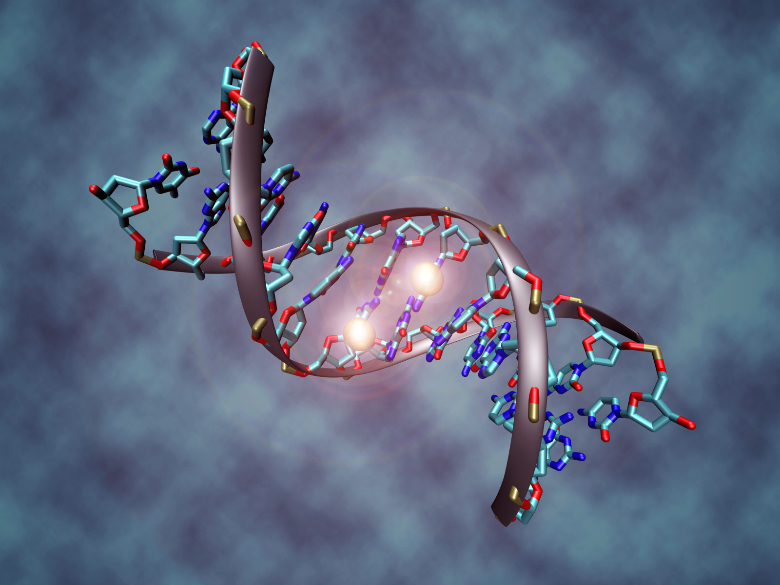In 1915, the Russian biologist Nikolai Koltsov predicted that gene methylation—the incorporation of a methyl chemical group, consisting of one carbon and three hydrogen atoms—could be a mechanism of gene variability. A visionary in many of his hypotheses, Koltsov began using the term “epigenetic” in 1934 to refer to changes (“epi“) in genes that affect their function. At the end of the 20th century, it was confirmed that not all heredity comes from the genetic sequence: certain marks in the DNA caused by environmental influences are heritable and shape who we are.

At the beginning of the 20th century, when the scientific community rediscovered the pea experiments carried out by the monk Gregor Mendel almost half a century earlier, the mystery of heredity was thought to have been solved. Without knowing anything about DNA, let alone the genetic code, Mendel’s laws explained how traits were passed from parent to offspring. The development of genetics made obsolete the idea put forward in the early 19th century by the French naturalist Jean-Baptiste Lamarck: the inheritance of traits acquired during an individual’s lifetime, such as the elongation of a giraffe’s neck or the muscular strength of a blacksmith, a view so widely accepted at the time that even Charles Darwin invented a mechanism to explain it.
According to Mendelian inheritance, it did not matter how much the giraffe stretched its neck or the blacksmith strengthened his forearms, since this left no trace in the heritable material passed on from parent to offspring, the genes of the germ cells (sperm and ova). Lamarckism was thus discarded, except in the Soviet Union, which embraced a pseudoscience of the inheritance of acquired traits developed by the agronomist Trofim Lysenko and which meshed with the communist notion that the environment could prevail over genes.
The discovery of the genetic code and phenotype
And yet, some experimental results did not fit with the mathematical and predictable nature of Mendelian inheritance. In 1909, the entomologist Mary Isabel McCracken published that a certain reproductive pattern in silk moths was not inherited according to Mendel’s laws, but depended only on the temperature at which the females were reared. This observation of an intergenerational inheritance that seemed to respond to the influence of the external environment was later confirmed and extended to other cases.

In 1942, the British embryologist Conrad Hal Waddington formally coined the term epigenetics as the set of processes that leads from genes to the expression of the phenotype, the observable traits of an individual. But it was not until several decades later, after the discovery of DNA as the molecule of heredity and the genetic code, that it began to be understood that certain chemical labels attached to genes, which do not modify their sequence and which can be inherited, regulate their expression and thus determine the phenotype.
Interestingly, one of the first confirmed epigenetic modifications was methylation, as Koltsov had proposed; it was discovered by the biochemist Rollin Hotchkiss in 1948 in calf thymus preparations, although its function was not yet known. In the 1970s and 1980s, it began to be understood that this and other modifications, in DNA or in its associated proteins (called histones), could switch genes on or off and be passed on to the next generation.
A non-coding inheritance that can spread
Although not all current definitions of epigenetics refer exclusively to heritable traits, the science is now mainly concerned with understanding how environmental factors, whether diet, habits or exposure to pollutants or infections, introduce such marks into genes, and how they influence the phenotype of offspring. And while there is often talk of a resurrection of Lamarckism, experts warn that some claims are exaggerated or outright falsehoods; it is not a question of building muscles to have stronger children, as in Lamarck’s classic example, much less that genes can be controlled at will.

But it is true that we are not a blank slate at birth: studies show that nutritional deficiencies during pregnancy can lead to low birth weight, and that this can increase the risk of cardiovascular disease or diabetes. Epigenetics can explain the differences between identical twins, but can also influence the health of offspring through the diet of their parents. This impact on health and disease, including serious ailments such as cancer, Parkinson’s and others, makes epigenetics a crucial field of study. In 2010, the Human Epigenome Project was launched, which has defined a wide range of modifications that have an effect on gene activity, and there are now drugs that target epigenetic modifications implicated in cancer.

Epigenetics is still an emerging science with many hidden secrets, and it is possible that this non-coded inheritance in genes extends beyond chromosomes. A 2023 study found that worms fed a compound found in the skin of some fruits produce a lipid that improves neuronal function and is passed on to offspring with the same effect. It is often said that we are what we eat, but through epigenetics we can also be what our mother and grandmother ate.
Javier Yanes
Comments on this publication